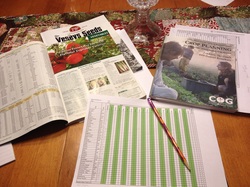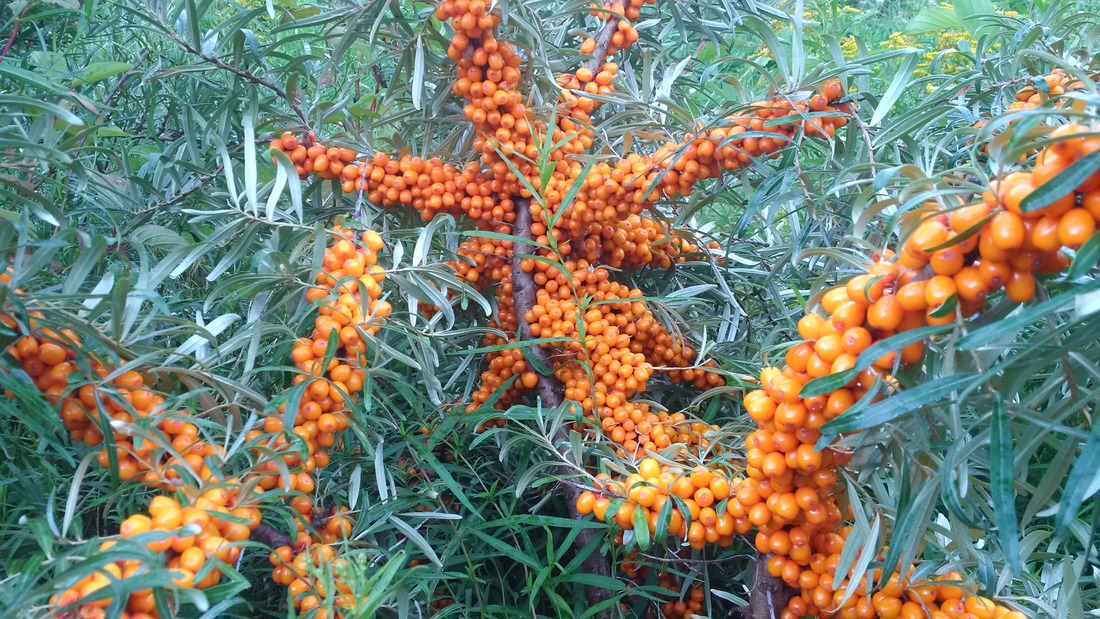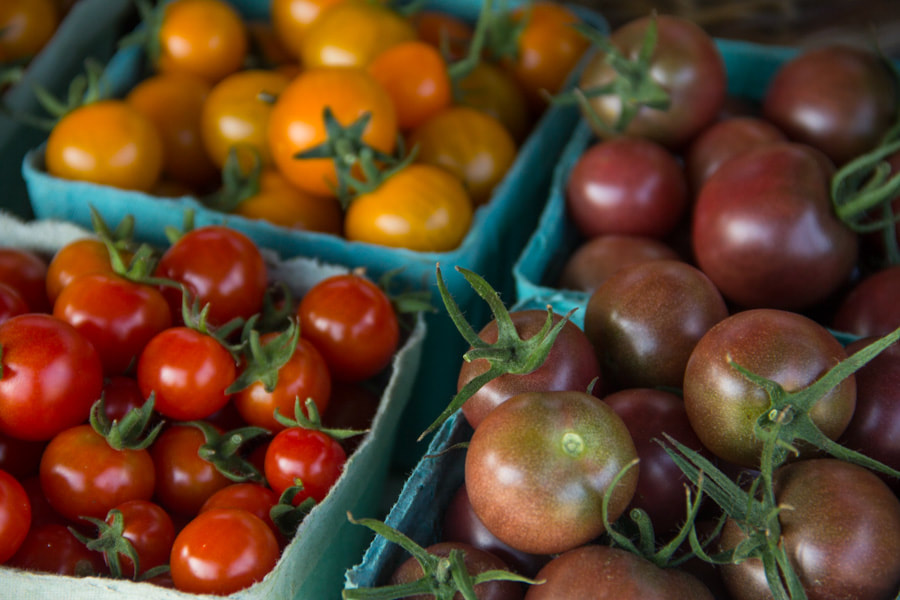 We have made it to the point in the season where all the vegetables are planted (minus some late spinach and lettuce) and the plants are getting large enough to out-compete the weeds. This doesn't mean we get to stop weeding but it becomes less pressing. This week we planted the fall kale and carrots, and the other fall crops like winter squash, cauliflower, leeks, and onions are looking great. I have also tried my hand at growing sweet potatoes this year so I am excited to harvest our first sweet potatoes in September. The problem with root crops is that you can't actually see what is going on beneath the soil surface so you just have to trust that they are growing well! Maybe I'll take a sneak peek at one of the plants in a week or two, just to satisfy my curiosity. I've had a few questions about the planning process I use when planting and harvesting vegetables, so I thought I would take the time in this post to explain how I decide what is included in each weekly share. A planner and organizer by nature, crop planning is one of my favourite aspects of market gardening. In the deep cold of winter, I snuggle up to the fire, drink my tea, and peruse seed catalogues. But before I order my seeds, I will have decided the quantity and type of vegetables that will be included in each of the weekly shares. I do this using a spreadsheet that lists all the crops I intend to grow. I have also entered the market value of each crop based on the average price charged by organic growers in our area, by what I would charge if selling it at the farmers' market, or, to a lesser extent, grocery store prices. I then select which vegetables will be included each week. The spreadsheet will calculate the average value of each week's share and I ensure that it matches the weekly target. The weekly target price is simply the annual cost of the share ($400 for small and $550 for large), divided by the number of share weeks (20) plus 15%. For example, a small share is 400 / 20 + 15% = $23. The extra 15% value we add to the weekly share is our way of saying thank-you for paying in advance for produce 'sight unseen'. Each week won't match the target exactly, but we try to keep things as even throughout the season as possible, so that the final total value meets or slightly exceeds the target. The first 3 - 4 shares of the season will always be slightly below value, with the shares in late August and September being above value. This is simply because there is more bounty in August and September, and this is when the higher value crops (tomatoes, peppers, cucumbers, eggplant, carrots) are readily available. All this harvest planning then gets translated into planting dates for the crops. If I know that I want to have cauliflower in the shares in September, I count back the number of days required to grow cauliflower, and this tells me when to plant it in the field. Of course, as with any good planning, you have to be prepared for things to not go as expected! A late, wet spring will prevent us from getting into the fields when we need to sow the first crops. Or, greater than average rainfall can cause disease in the plants and shorten their productive life. Or, human error can cause crops to fail. As the season progresses, I track all the changes I make to the weekly share contents so that I can ensure that the value still works out by the end of the season. I will also carry forward these observations into the next season, and make any necessary changes. For example, our broccoli crop did not produce as early or as plentifully as I had planned, so I will make adjustments next year to try to remedy this. On the other hand, our lettuce has been extraordinarily plentiful, so that will be reassessed next year as well! Are your eyes crossed with boredom yet?! The only other point I will add is that I welcome feedback in regards to the quantity and type of produce you are receiving. This feedback is always taken into consideration when planning for future seasons. At the conclusion of this season, I will send a formal survey, but for now, informal feedback is welcome! Weekly Share Contents Head Lettuce Swiss Chard Garlic Green and Yellow Beans Carrots OR Zucchini Potatoes Cucumbers Parsley Recipes
Green Beans with Garlic Dressing This is so scrumptious I could eat the whole salad before it gets to the table! I like it served warm or room temperature. It can be modified to use as many beans as you have available. Salad: 2 pounds green beans, ends trimmed 1/2 cup sliced or chopped almonds 1 tbsp chopped fresh thyme Dressing: 2 tbsp extra-virgin olive oil 1 tbsp freshly squeezed lemon juice 1 tsp Dijon mustard 2 garlic cloves, crushed 1/2 tsp finely grated lemon zest 1/2 tsp sea salt 1/4 tsp black pepper To prepare the beans for the salad, blanch the beans in a large pot of boiling water for 4 minutes or until crisp-tender. Plunge them into ice water to stop the cooking and set the colour.; drain well. To make the dressing, whisk all the ingredients in a small bowl. To assemble the salad, place the beans, almonds, and thyme in a large serving bowl, add the dressing, and toss well to coat. Summer Vegetable Soup A great way to use up those extra vegetables you don't know what to do with! 1 tbsp extra-virgin olive oil 1 medium onion, diced 3 - 4 cloves garlic, crushed 2 - 3 large carrots, diced 1/2 pound green or yellow beans, cut into 1 inch pieces 2 - 3 cups fresh tomatoes, diced 6 - 8 cups vegetable or chicken stock 2 zucchini, diced 4 cups greens (chard, cabbage, kale, collards), thinly sliced 1/4 cup fresh herbs (basil, chives, oregano, marjoram) 2 cups cooked beans (chickpeas, cranberry, baby lima) 1 - 2 tsp sea salt freshly ground black pepper Heat the olive oil in a 6-quart pot over medium heat. Add the onion and saute for about 5 minutes, or until soft. Add the garlic and carrots and saute a few minutes more. Add the green beans, tomatoes, and stock and simmer, covered, for 10 to 15 minutes, or until the vegetables are tender but not all the way cooked. Add the zucchini, greens, fresh herbs and cooked beans and simmer for 5 to 7 minutes more, or until the zucchini is cooked. Season with sea salt and pepper to taste. (Both taken from: The Whole Life Nutrition Cookbook Alissa Segersten and Tom Malterre) Comments are closed.
|
Archives
February 2020
|


 RSS Feed
RSS Feed